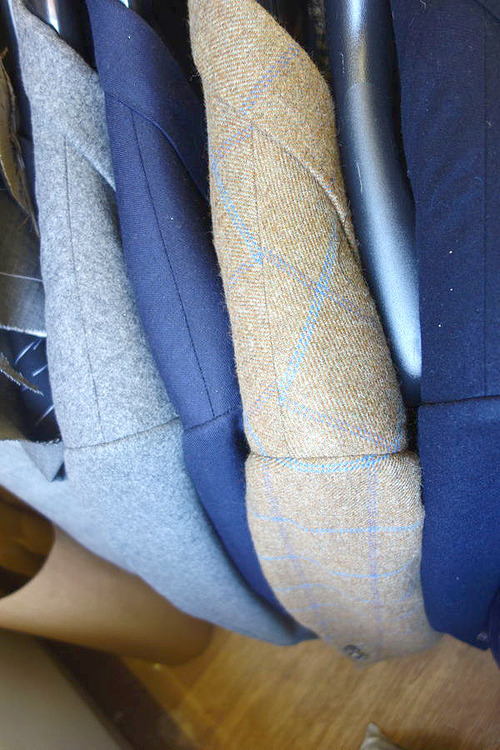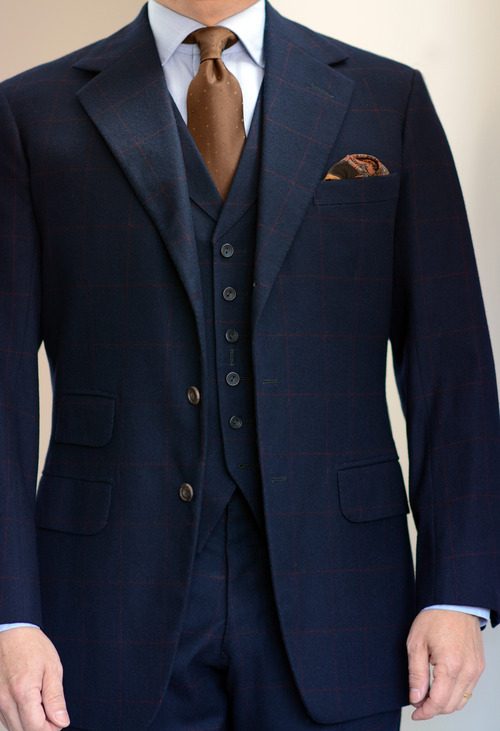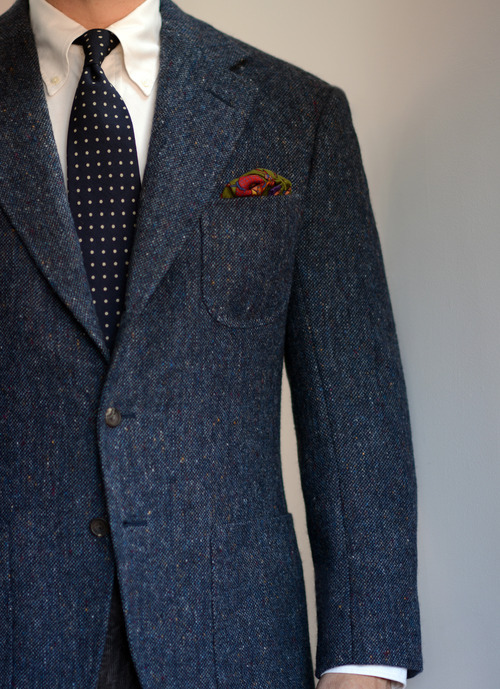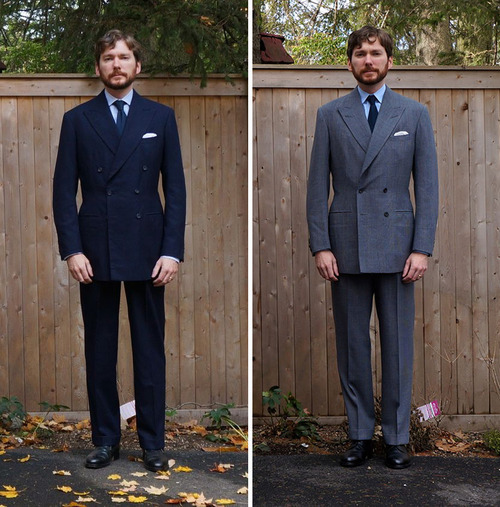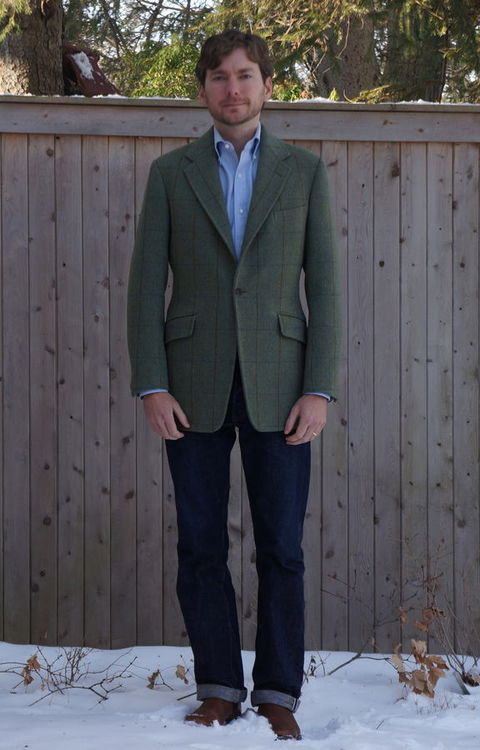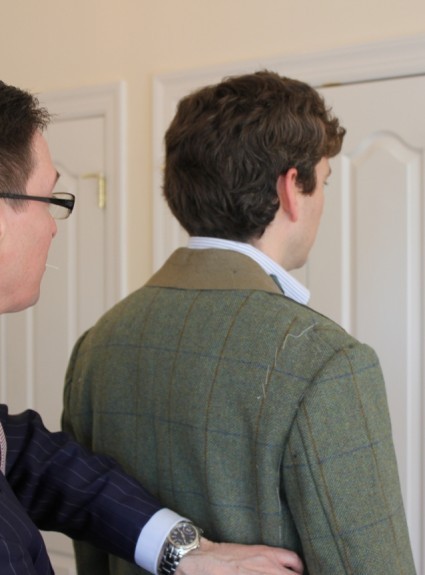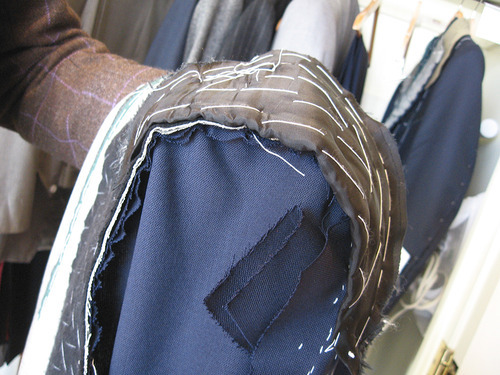
Southern Italy is famous for its soft tailoring, but you don’t have to go all the way to Naples to get a soft shoulder. One of my tailors, Steed, is famous for their natural shoulder line. When they were in town this weekend as part of their US tour, I stopped by to chat about my next commission. During our conversation, they were nice enough to show me what goes into their shoulder construction.
As many readers know, Edwin DeBoise worked for Edward Sexton (of Tommy Nutter fame) and Anderson & Sheppard before starting his own tailoring house. His current style is quite close to the Anderson & Sheppard drape cut — a bit of fullness in the chest with a nipped waist, close skirt, and soft shoulder. Despite all the shaping, there’s actually very little padding inside their coats, as you can see above.
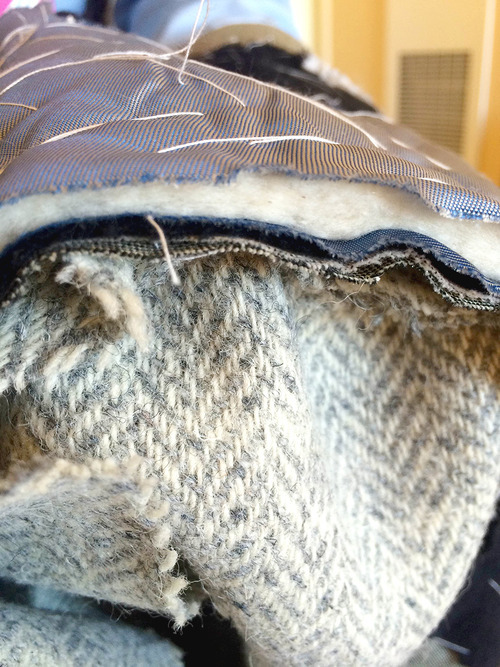
Here you can see the different layers that go into the shoulder. The very top is the lining and underneath that is the shoulder pad. The black material is demett — a soft, felt-like fabric that extends into the sleeve head. It sits on top of the horsehair and body canvas, partly to protect the wearer from the rough horsehair below (the stuff can be a bit prickly). Finally, the bottommost layer is the jacketing, which in this case is a cream herringbone tweed. Baste stitching holds everything together.

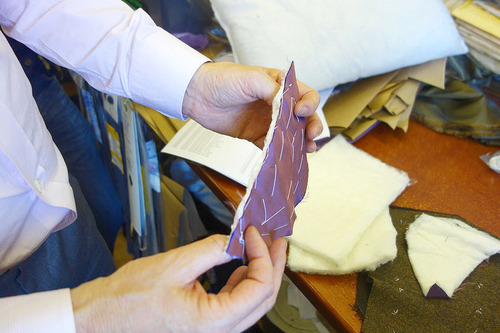
You can get a better sense of the thickness of the shoulder pads here, in these two photos David Isle took for StyleForum (these were taken at Steed’s workshop in Cumbria). Unlike most tailoring houses — including those on Savile Row — Steed doesn’t use ready-made pads. Instead, they make their own from cotton wadding. This allows them to control the thickness and shaping better when they’re adjusting something on a client.
In fact, I originally went in on Sunday to see if they could add a little more padding to my right shoulder. Most men have a dropped shoulder that corresponds with their dominant hand, but mine is especially dropped. Since Steed makes their own pads, they’ll be able to adjust the thickness to hide the defect (as much as it can be hidden, anyway), while also giving the illusion of a natural shoulder. As Edwin put it, you don’t want to overdo it, otherwise it’ll both look and feel awkward.
Below you can see some variations of Steed’s shoulder constructions. Voxsartoria’s three-piece suit is slightly more padded, while David’s green checked tweed is a little more natural. Things are adjusted according to the jacket’s style and the customer’s preferences. All, however, are excellent examples of that soft English shoulder line.
(Photos via Steed, David Isle, Voxsartoria, Slewfoot, and me)
